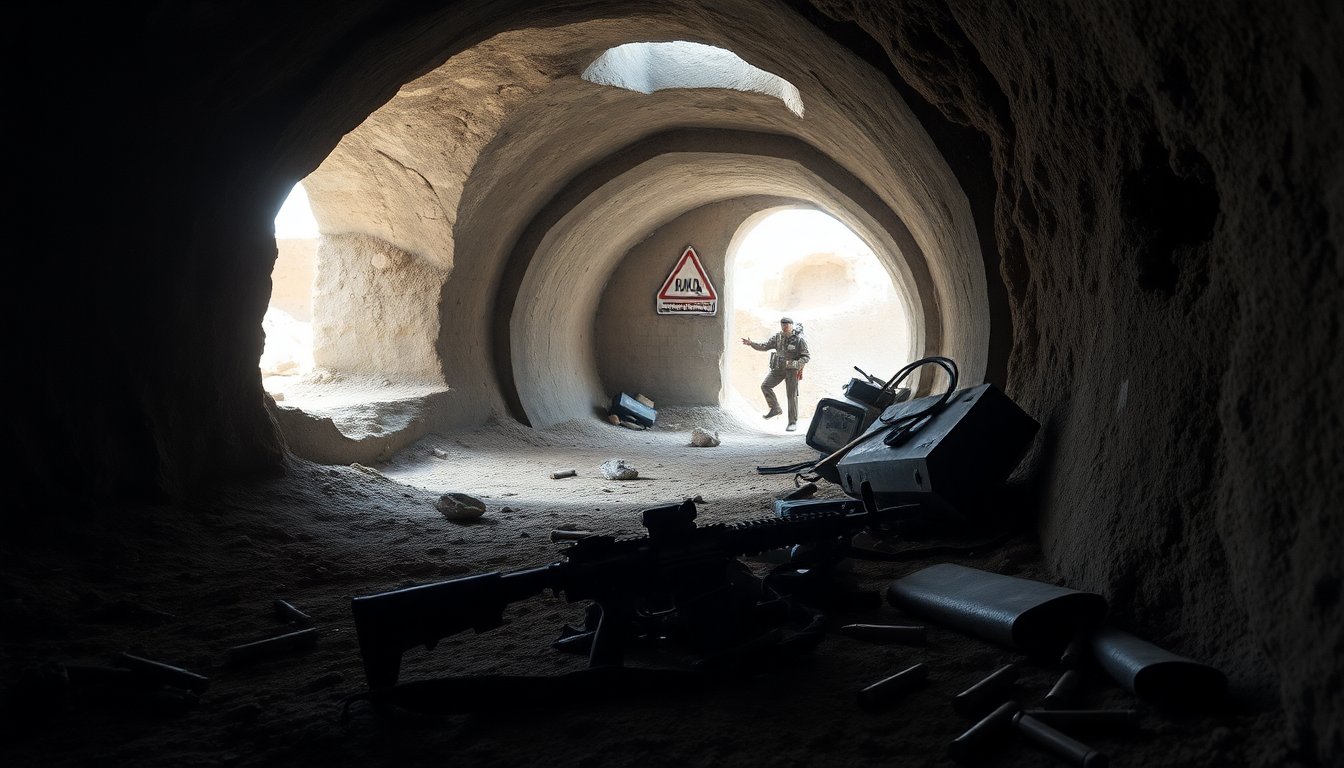Table of Contents
“`html
The conflict in Gaza has taken a troubling turn as reports emerge of Hamas fighters trapped within a network of tunnels under Israeli control. This precarious situation not only endangers the lives of those militants but also poses a significant threat to the fragile ceasefire that has been established in the region.
The ongoing tensions, exacerbated by recent events, could lead to a rapid escalation of violence.
Hamas, an Islamist militant organization, has maintained control over the Gaza Strip for nearly two decades, often resorting to violence in its opposition to Israel.
Following a deadly attack, which resulted in the deaths of approximately 1,200 people in southern Israel, the group has faced a brutal military response from Israel, aimed at dismantling its operations.
The history and context of Hamas
Hamas was founded in December 1987, during the first intifada, as an offshoot of the Muslim Brotherhood.
Its establishment was a response to the growing discontent among Palestinians regarding the Israeli occupation. Over the years, Hamas has engaged in various forms of violence, including suicide bombings and rocket attacks, in its quest to eradicate the Israeli state.
Hamas’s objectives and international perception
Internationally, Hamas is often labeled as a terrorist organization by many countries, including the United States. This designation stems from its explicit rejection of Israel’s right to exist and its charter, which originally called for the destruction of the Israeli state.
However, in 2017, Hamas attempted to moderate its stance by issuing a new political document that hinted at potential acceptance of a Palestinian state within pre-1967 borders, without formally recognizing Israel.
Despite these attempts at image management, the ongoing conflict has led to widespread devastation in Gaza.
According to reports from the Hamas-run Gaza Health Ministry, over 64,000 lives have been lost since the outbreak of war, highlighting the dire humanitarian crisis unfolding in the region.
The current state of the ceasefire
As the situation stands, the presence of Hamas fighters trapped in tunnels raises questions about the sustainability of the ceasefire. With Israeli forces on high alert and the potential for renewed hostilities looming, the delicate balance of peace could be disrupted at any moment. The ongoing military operations and the targeting of Hamas leaders have created a leadership vacuum within the organization, further complicating the prospect of a peaceful resolution.
International involvement and future implications
The international community has been closely monitoring the developments in Gaza, with various nations engaged in attempts to broker peace. The Trump administration’s proposed peace plan is currently under discussion, signaling a potential shift in diplomatic efforts. Nevertheless, the ongoing violence and humanitarian crisis pose formidable challenges to any meaningful progress.
With many countries providing military support to Israel, including substantial aid from the United States, the military dynamics in the region remain heavily skewed. Iran, a key ally of Hamas, continues to provide financial and military support, complicating the geopolitical landscape further.
In conclusion, the situation for Hamas fighters trapped in tunnels in Gaza is a microcosm of the greater conflict at play. The fragile ceasefire is under constant threat from the actions of both Hamas and Israeli forces, and the humanitarian implications are dire. As the international community grapples with how to address this complex conflict, the need for a sustainable solution becomes increasingly urgent, lest the cycle of violence continue unabated.
“`





